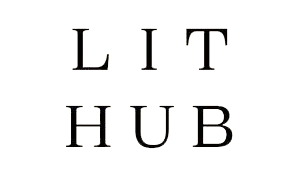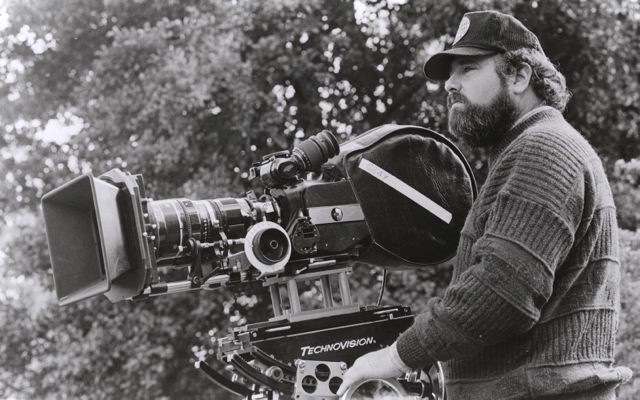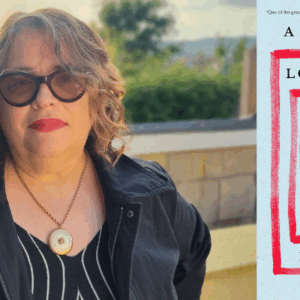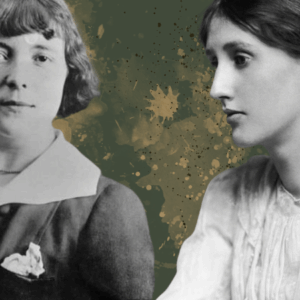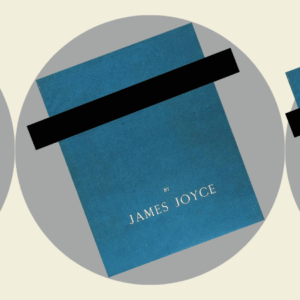
What Can a 17th-Century English Doctor Teach Us About Embracing Uncertainty?
Cutter Wood on Thomas Browne and the Joys of Exploring What We Don't Know
I’ve been reading Sir Thomas Browne again. It happens every few years. There must be some underlying mental weather pattern here that I haven’t quite cottoned on to. Life is cruising along—sure there are the usual issues but nothing really acute to complain about—and then one day I go and pull down my big yellow copy of the collected works and start paging back through Pseudodoxia or Hydriotaphia. I don’t know what my problem is.
Reasonable people don’t do this. Browne, a 17th-century Norwich doctor, is legendarily excruciating to read. His prose is dense, ornate, disorienting, the syntax so convoluted, the spellings and conjugations so old-timey, the footnotes so profuse, the habit of flowering allusion so insistent that the reader often has the sensation that all forward progress has been arrested; they are no longer moving through the text, rather it’s the text that is passing, inching, through them.
It feels at times as if an entire college curriculum had been boiled down and concentrated into each paragraph, like some literary analog of Vegemite. It’s not obviously pleasant, in other words, in the usual ways we think of pleasant. I once tried to actually teach a portion of Hydriotaphia to an undergraduate creative writing class. They were so smart and sweet, and until the day I assigned that reading, they believed in me. They thought I was someone they could trust.
Like Michel de Montaigne, the other skeptical hero of that era, what keeps Browne fresh and vital is his interest in what he doesn’t know.
Each of Browne’s works has its own trials and treasures, from The Gardens of Cyrus, a monograph on the shape of the letter X, to Pseudodoxia Epidemica, a takedown of then-popular superstitions, but inevitably it’s Hydriotaphia I return to. The premise of the book is simple—a few ancient urnes have been digged up in Norfolk, and Browne is going to write a brief discourse on them—but what he actually does is far vaster in scope. He uses the occasion to consider how people across all known human history have approached the disposition of dead bodies, whether they buried or burned them and how, what rites they executed, what decorations or attitudes they affected. (It’s not just his style that gets readers going, you see, it’s his subject matter, too.)
If you can keep your bearings long enough to make it through the opening epistle, the first thing you notice is Browne’s ability to turn a phrase. Like some Mesopotamian mound, his work is strewn with fragments of unusual and arresting beauty. Take this section from the first chapter on the comparative shallowness of many graves:
…few have returned their bones farre lower then they might receive them; not affecting the graves of Giants, under hilly and heavy coverings, but content with less then their own depthe, have wished their bones might lie soft, and the earth be light upon them.
It isn’t just the delicacy of his touch here, the bones lying soft and the earth light, it’s his ability to cast facts in unlikely and illuminating terms. We do not bury the dead six feet deep, we content ourselves with less than our own depth, a style of measurement that suggests far more about the psychology of burial than six feet ever could.
But there’s more. Pulling back, we see the paragraphs, too, accomplish something strange and unkempt. His knowledge is encyclopedic, but Browne’s magic doesn’t lie in the recitation of sundries. Rather, it’s his habit of loading you with information, attenuating your attention with tangles of subordinate clauses and neologistic legerdemain, only to dump you, often with little ceremony, into some startling philosophical suggestion, as when a paragraph about the folly of burying the dead with riches ends with a defense of grave robbing: no man is wronged where no man is possessor.
Or consider a paragraph, one of many, on the subject of cremation:
Some bones make best Skeletons, some bodies quick and speediest ashes: Who would expect a quick flame from Hydropicall Heraclitus? The poisoned Souldier when his Belly brake, put out two pyres in Plutarch. But in the plague of Athens, one private pyre served two or three Intruders; and the Saracens burnt in large heaps, by the King of Castile, shewed how little Fuell sufficeth. Though the funeral pyre of Patroclus took up an hundred foot, a peece of an old boat burnt Pompey; and if the burthen of Isaac were sufficient for an holocaust, a man may carry his owne pyre.
It’s only a paragraph debating the flammability of a human body. He seems to be piling his facts as haphazardly as one chucks logs onto a fire, but look more closely. See how he carries us through human history, from Heraclitus, the weeping philosopher, to the end of Athenian democracy, from the ethnic cleansing of the Reconquista to the lover of Alexander the Great and the faltering of the Roman republic, until he deposits us finally, without warning, at the top of a hill in the Old Testament, with the recognition—premonition, I almost want to say—that actually it takes very little, both physically and philosophically, to burn a human being.
But even this still isn’t Browne’s greatness. You have to step back yet further before you can begin to see what makes Sir Thomas Browne so invaluable, maybe especially in this day and age. Like Michel de Montaigne, the other skeptical hero of that era, what keeps Browne fresh and vital is his interest in what he doesn’t know. Montaigne, who wore around his neck a medallion engraved with the words What do I know, was particularly focused on the limits of his own abilities. “I would venture to treat some matter thoroughly, if I knew myself less well,” he wrote. “Of a hundred members and faces that each thing has, I take one, sometimes only to lick it.” And Browne, likewise, is perpetually angling for the territories of his own ignorance: “I love to satisfy my self in a mystery.”
What you begin to feel as you read Browne, or what I do at least, is an ever-expanding sense of possibility.
Czeslaw Milosz, in his 1983 Norton lectures, noting the difficulty of being a child in today’s world, touched on the importance of mystery to writing. So much was known, so much had been established, he felt, that the territories of uncertainty and wonder had all but vanished. What was childhood, what was the perpetual childhood of poetry, in an era of answers? The notion seems laughably quaint in 2025, when the world feels at times as if it’s been reduced to a series of linked and nested YouTube how-tos and TikTok life hacks, and every conversation ends with someone looking something up on Wikipedia.
More than a few have noted lately a tendency in both readers and writers toward a neatly proscribed morality. Garth Greenwell makes an argument for the necessity of Roth’s filth, for example, while Yiyun Li defends Tolstoy, and by sly extension Munro. The points they make are, I believe, important and necessary, but I have a feeling that Li and Greenwell have taken hold here only of a corner of the problem. We aren’t suffering merely from a lack of tolerance for risqué material or an insistence on culling from the canon all but the most saintly of writers. It isn’t only moral certainty that’s troubling, it’s certainty itself. I return to Browne because I find in his work the suggestion of an antidote.
One of the chief complaints with Browne is simply that it’s hard to tell where he’s going. There are no thesis statements, no TEDTalk signpostings. He goes now this way, now that, now he skims along the surface, now he plunges for paragraphs on end into the most seemingly trivial of matters. Where he’s going, no one knows, least of all, one begins to suspect, the author himself. It’s annoying, but I feel now that it’s also the point. The best do lack all conviction, but it’s not a bad thing. It’s necessary. It’s the quality we look for not only in writers but in judges and juries, bartenders and confidantes, the capacity to have no agenda, to accept one’s ignorance, to surrender to, and even relish in, uncertainty.
What you begin to feel as you read Browne, or what I do at least, is an ever-expanding sense of possibility, of unexplored paths forking off left and right at every comma and semi-colon, and in fact, it was by tiptoeing down one of these paths more than ten years ago that I found myself considering the fate of our bodies in a different sense. A corpse, after all, is only the final thing we need to dispose of. Throughout our lives, the body continuously sheds material—from hair to urine to tears—and I thought it would be funny, maybe interesting even, to consider how we deal with these lesser disintegrations. These thoughts would eventually become a book, Earthly Materials, but in many ways, I still think of them as simply more footnotes to Browne’s original. It’s the way I’ve come to consider a lot of writing lately, a series of footnotes to the writers you admire.
__________________________________
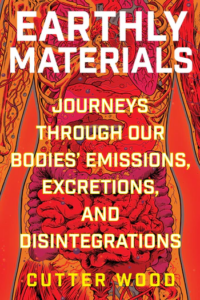
Earthly Materials: Journeys Through Our Bodies’ Emissions, Excretions, and Disintegrations by Cutter Wood is available from Mariner Books, an imprint of HarperCollins Publishers.
Cutter Wood
Cutter Wood is the author of Love and Death in the Sunshine State. His work has appeared in Harper’s, The Virginia Quarterly Review, The Paris Review Daily, and other publications. He completed an MFA in creative nonfiction at the University of Iowa, is the recipient of fellowships from the National Endowment for the Arts and the Bread Loaf Writers’ Conference, and was the Jenny McKean Moore Writer-in-Residence at George Washington University. He lives in Baltimore with his partner and family.








